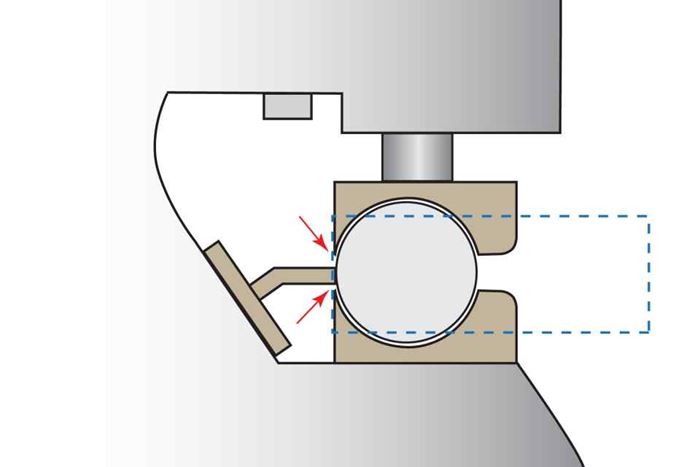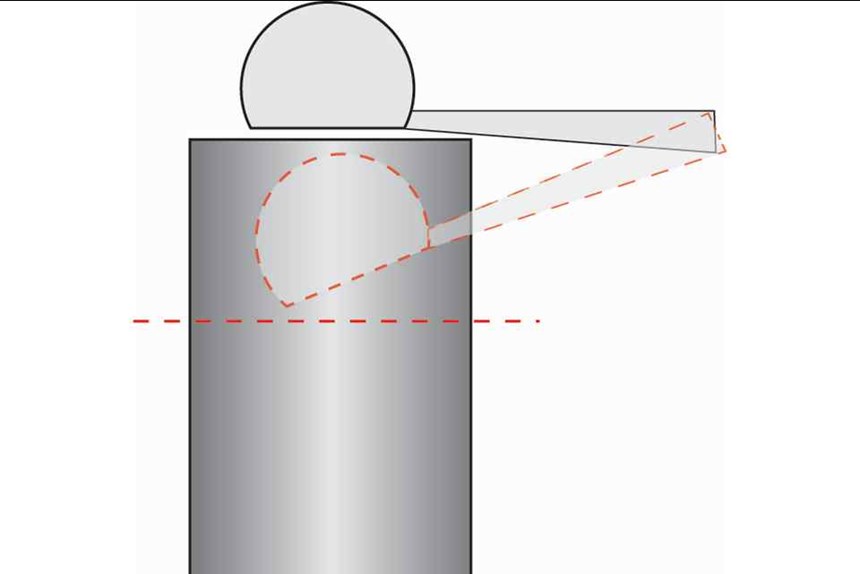Just This Once, You Can Blame the Gage
Even the old, reliable gage is subject to wear. George Schuetz, director of precision gages at Mahr inc., gives guidance for machinists to maintain their gages.
For a change of pace this month, rather than advising those who use dimensional gages to not blame the gage when measurements are incorrect, I am going to address the times when one can blame the gage. The gage can be wrong, or perhaps I should say, a gage can go wrong.
One way that a gage can go wrong is through wear, and this is something that we are all inclined to overlook. This is likely because most users have come to think of the gage as a constant, like the mountains far off in the distance. Still, even the mountains will wear down with time.
How often does a machinist zero-check a micrometer for wear? How often does a machinist use an optical flat to check the anvils for flatness and parallelism?
Remember that the gage becomes the verifier of the print, the final word on the job, as far as the operator is concerned. Take a fixed-plug gage, for example. The print may say 1.2275 inches and the plug-gage handle may be similarly marked, but if the Go Gage is worn down to, say 1.2263 inches, the operator will give you 1.2263-inch holes.
In the case of a micrometer or a comparator with parallel flat anvils, wear tricks us into a faulty measurement, which is illustrated in the exaggerated sketch shown in Figure 1. For example, if we set the comparator with a flat master, like a gage block, and then measure a cylindrical piece, error has been introduced.
How often should a gage be checked for wear? There is no single answer to this question. Many factors contribute to its wear: how many times it is used per week, month or year; the degree of hardness of the materials being tested; the kind of handling it receives; the frequency of repetition of a specific operation; and the conditions of cleanliness.
There are many situations in large-volume production in which gages are used as production tools. In such a setup, a gage may be measuring thousands of parts in a day. Contact with the parts always would be at the same place on the anvils or points. If the material being tested were very hard or abrasive, it would not be many weeks before the contact point on the gage would get worn down and accuracy would diminish (see Figure 2).
Of course, the material of the parts being checked must be considered when estimating the durability of your gage. It has been found that rough-cast iron, with its high silica content, is extremely abrasive and will wear down the hardest materials in a surprisingly short time. Cast aluminum parts will as well. Today, there are new materials like ceramics or especially hard materials that are designed for extreme wear being gaged. These characteristics must be taken into consideration when deciding on a wear-inspection protocol.
Conditions of cleanliness can be very important in reducing the amount of wear on a gage. It does not take much effort to imagine how much wear there might be on a micrometer used in a shop where there is abrasive dust in the air.
One should never forget that even the old reliable gage is subject to wear. It is imperative that the operator make it a habit to “check the checker” at regular intervals.
Related Content
A New Milling 101: Milling Forces and Formulas
The forces involved in the milling process can be quantified, thus allowing mathematical tools to predict and control these forces. Formulas for calculating these forces accurately make it possible to optimize the quality of milling operations.
Read MoreBuying a Lathe: The Basics
Lathes represent some of the oldest machining technology, but it’s still helpful to remember the basics when considering the purchase of a new turning machine.
Read More6 Steps to Take Before Creating a CNC Program
Any time saved by skipping preparation for programming can be easily lost when the program makes it to the machine. Follow these steps to ensure success.
Read MoreUnderstanding Swiss-Type Machining
Once seen as a specialty machine tool, the CNC Swiss-type is increasingly being used in shops that are full of more conventional CNC machines. For the newcomer to Swiss-type machining, here is what the learning curve is like.
Read MoreRead Next
Obscure CNC Features That Can Help (or Hurt) You
You cannot begin to take advantage of an available feature if you do not know it exists. Conversely, you will not know how to avoid CNC features that may be detrimental to your process.
Read MoreThe Cut Scene: The Finer Details of Large-Format Machining
Small details and features can have an outsized impact on large parts, such as Barbco’s collapsible utility drill head.
Read More3 Mistakes That Cause CNC Programs to Fail
Despite enhancements to manufacturing technology, there are still issues today that can cause programs to fail. These failures can cause lost time, scrapped parts, damaged machines and even injured operators.
Read More












.png;maxWidth=300;quality=90)






.png;maxWidth=300;quality=90)








